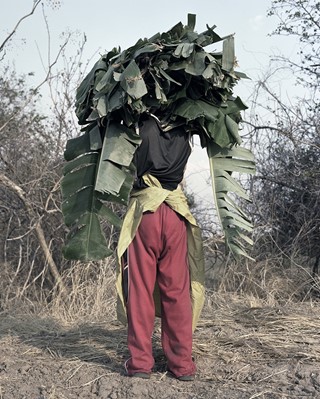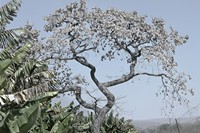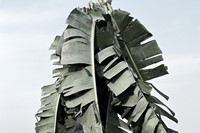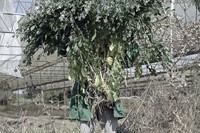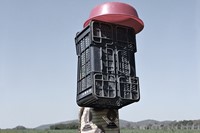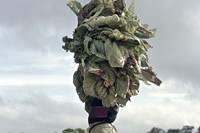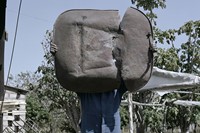Photographer Jackie Nickerson talks Africa, agriculture and political motivation as her new book and accompanying exhibition are launched
Photographer Jackie Nickerson strikes a perfect balance between the thought provoking and the aesthetically pleasing, her works skillfully composed, harmoniously hued explorations of identity and environment. In her first book, the much acclaimed Farm, Nickerson examined agricultural life in Africa through a series of landscape shots and engaging, “straight up” portraits of farm labourers. Since then, the photographer has turned her lens to religious communities (in her beautifully austere series Faith) as well as to the dapper Brazzaville “Sapeurs” of The Congo for her series Sapeur. Now, however, Nickerson has come full circle, returning to both Africa and agriculture – but more broadly and with a more theoretical slant – for her latest book and accompanying exhibition, both entitled Terrain.
As in Farm, Nickerson presents landscapes alongside portraiture but unlike those of her first project, Terrain's labourers remain anonymous, each worker's face disguised by the tools or materials of their trade – from plastic crates and sheeting to jagged banana leaves. "This more sculptural structure, where the identity of the person becomes intertwined with what they are growing, is a kind of metaphor for the process of labour, and how we can’t escape the physical and psychological effects of what we engage with," Nickerson explains. The images are hugely powerful, shying away from usual methods of photojournalism and instead employing a reduced but mesmerising artistic language to raise key questions surrounding the issues of crop specialisation, subsistence farming and food security. Here, the day before the exhibition opens at London's Brancolini Grimaldi gallery, we chat to Nickerson to discover more about the project as well as her inspirations and motivations.
"I think it’s my job to ask questions, sometimes difficult questions and ask people to think about how they might address these"
When did you first visit Africa? What is it about the continent that draws you back to it – physically and in terms of subject matter?
My first visit to Africa was in 1997. I went for 2 weeks and ended up staying for four years. I’m from an urban background, where I’ve lived in confined spaces and environments made up of concrete. Space is a precious commodity. So my first visit to Africa was liberating – it gave me a feeling of space and freedom. There were places that were completely natural, un-manicured, feral, volatile. I found it intensely interesting. And of course, the subject matter – us in the landscape, followed on from this.
What were the key inspirations behind Terrain?
I'm inspired by all kinds of things – not only images, but writers, sculptors and painters. It can be a political or intellectual issue that interests me. Then I have to work out how to make images that put these points of interest across. I think that’s why this series of photographs is more conceptual than my previous work.
What interests you in particular about the relationship between people and their working environments?
I’ve always been interested in cause and effect and this theory informs all my work. I’m specifically interested in how we are all affected by our environment – whether it has a big impact or just a miniscule impact, short term or long term. And I want to observe those markers, those signals. I’ve usually concentrated on sub groups of people working within a specific environment.

What do you hope viewers will take away from Terrain?
I think it’s my job to ask questions, sometimes difficult questions and ask people to think about how they might address these questions. I hope I’ve done this with these pictures.
Despite the fact that the images in Terrain depict a very industrious and laborious way of life, they are beautifully shot and very aesthetically pleasing. Is beauty something that you consciously try to achieve in your work?
When I began to take the pictures I realised that I needed to create a visual language that put across the farmers and farm workers as individuals and as modern people. I wanted the viewer to be challenged to look at Africa in a different way and also for the images to have an aesthetic, a beauty. Actually, the images are very much a recreation of moments in everyday life – it’s naturally beautiful.
Would you describe your work as politically motivated?
Yes, very much so. Human rights are a big motivation for me. There are all kinds of issues that motivate me in my work – global warming, water resources, sustainable development, labor issues and other important problems. It might seem strange to address these issues with these images but for me, it’s really not.
Do you have a favourite memory from your time spent in Africa shooting Terrain?
I wish I could single one experience out, but there are always so many. I guess the thing I enjoyed most was the collaborative process of working with the guys on the farms I visited. We had a lot of laughs and I learned a lot.
Terrain opens at Brancolini Grimaldi tomorrow and runs until December 21. The book is available now.
Text by Daisy Woodward
